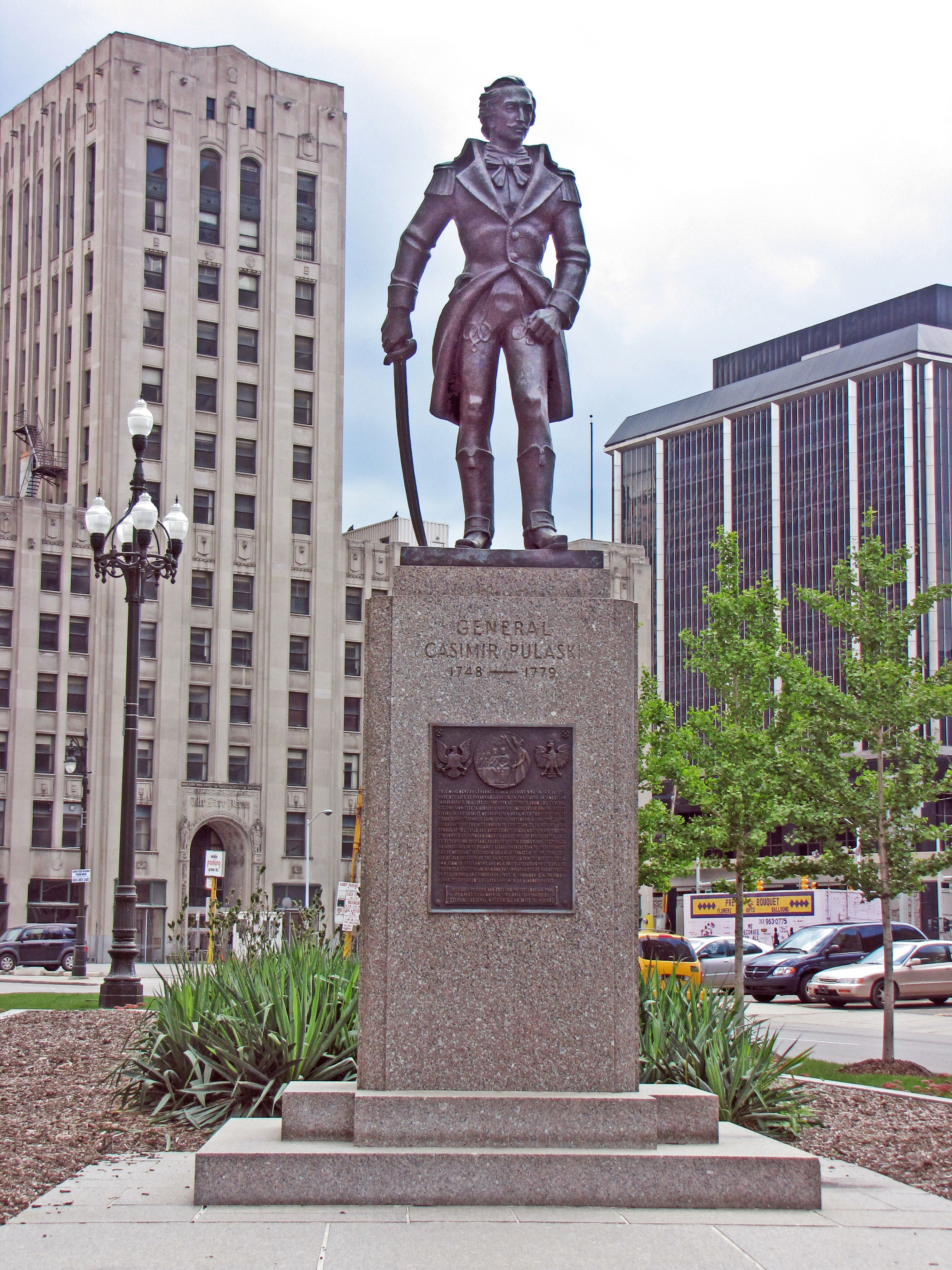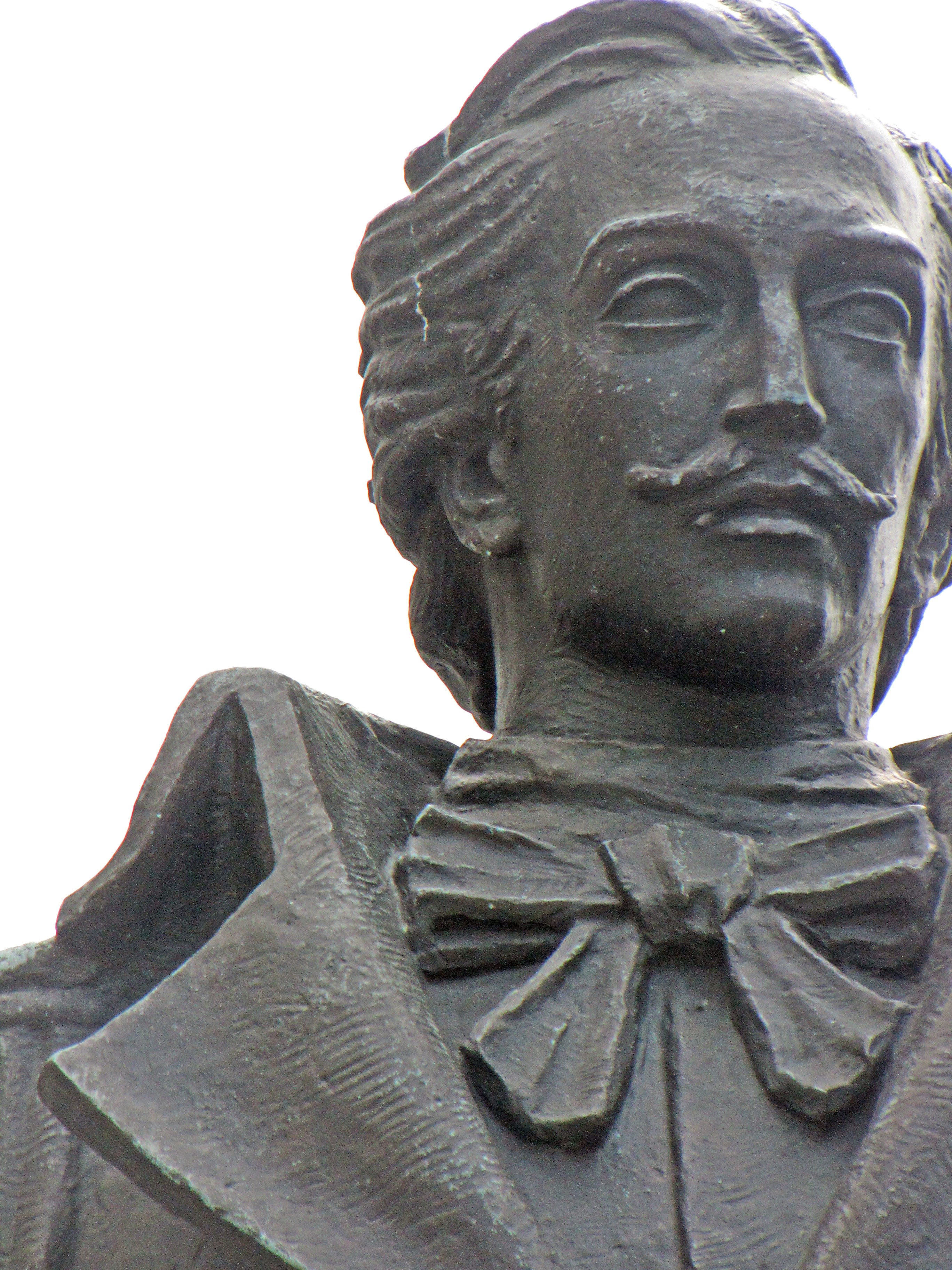

Although there is some dispute about the date and place, Casmir Pulaski was apparently born in Warsaw on March 6, 1745 to a noble Polish-Lithuanian family. At birth he was known as Kazimierz Michael Waclaw Wiktor Pulaski. Many of the Polish elite at this time were unhappy with Russian and Prussian dominance of their country and wished to start an independence movement. In 1768, a Bar Confederation was established, and the next year, they established a military arm. For about four years, members of that group skirmished against Russian forces, and at this time, Casmir Pulaski got his first military experiences. By 1772, the Russians had suppressed the Polish independence movement, and to save his life, Casmir Pulaski left Poland. I b elieve that he first traveled to Turkey where he hoped to convince the Turks to support the Polish independence movement. Those efforts were not successful so Pulaski moved on to Paris. Actually, he may have traveled from Paris to Turkey several times and sought to return to Warsaw but was denied permission to do so. By the time he reached Paris, he had a reputation for his military skills.
elieve that he first traveled to Turkey where he hoped to convince the Turks to support the Polish independence movement. Those efforts were not successful so Pulaski moved on to Paris. Actually, he may have traveled from Paris to Turkey several times and sought to return to Warsaw but was denied permission to do so. By the time he reached Paris, he had a reputation for his military skills.
In 1777, Pulaski met Benjamin Franklin in Paris. Franklin told him about the American Revolution and encouraged him to use his abilities to help the American colonies free themselves from British domination. Bearing a letter of introduction to George Washington, Casmir Pulaski left Paris for America in June, 1777. By August of that year, he was leading troops for Washington.
In 1778, George Washington wished to establish a cavalry force and secured Congressional approval to do so. Washington selected Pulaski to form the cavalry, so Casmir Pulaski is the father of the American cavalry.
Pulaski was, seemingly, a very aggressive military leader who wanted to lead forces against the British. Later in 1778, Pulaski proposed creating a force that would march to the South and expel the British from the forts they held along the Atlantic coast. George Washington and Congress agreed, and by May of that year, Pulaski’s forces were expelling the Red Coats from Charleston, thereby giving the Revolutionaries control of South Carolina. Pulaski continued to lead troops against the British in South Carolina and Georgia. While leading a cavalry charge on October 9, 1779, Pulaski was shot near Savannah. At that time, it was apparently traditional for the enemy to execute seriously wounded enemy soldiers, but the British recognized the importance and abilities of Pulaski so they permitted American troops to remove him from the battlefield. They placed him upon the naval ship, Wasp, where Pulaski died six days later.
There were few Poles in the American colonies at the time of the Revolution, but the Polish elite of that era knew what was happening along the Atlantic Coast. Some of them likened the American Revolution to the Polish independence movement and fought for the colonies. The impressive statue of Casmir Pulaski is only two blocks distant from the even larger and more impressive statue of General Thaddeus Kosciuszko. When Poles migrated to the United States in large numbers after the 1880s, they learned that Polish generals made important contributions to the successes of General Washington’s army.
Ferenc Varga sculpted this statue and the one of General Kosciuszko at Michigan and Third. The son of an internationally known sculptor, Ferenc Varga was born in Budapest in 1943. He earned a Doccumento de Arte from the Accademia di Belle Arte in Florence in the early 1960s. He has lived in several different countries and now maintains studios in Grosse Pointe and in Delray Ray Beach, Florida. A number of his works are on public display in the greater Detroit area, including the bust of Mikolaj Kopernik on the campus of the Detroit Public Library and a statue of Enrico Caruso at the Detroit Opera House.
Sculptor: Ferenc Varga
Date of Installation: 1970
Use in 2009: Public Art
Website for Ferenc Varga: http://www.varga-art.com/
Photograph: Ren Farley; August 18, 2009
Description prepared: September, 2009
Return to Public Art and Sculpture